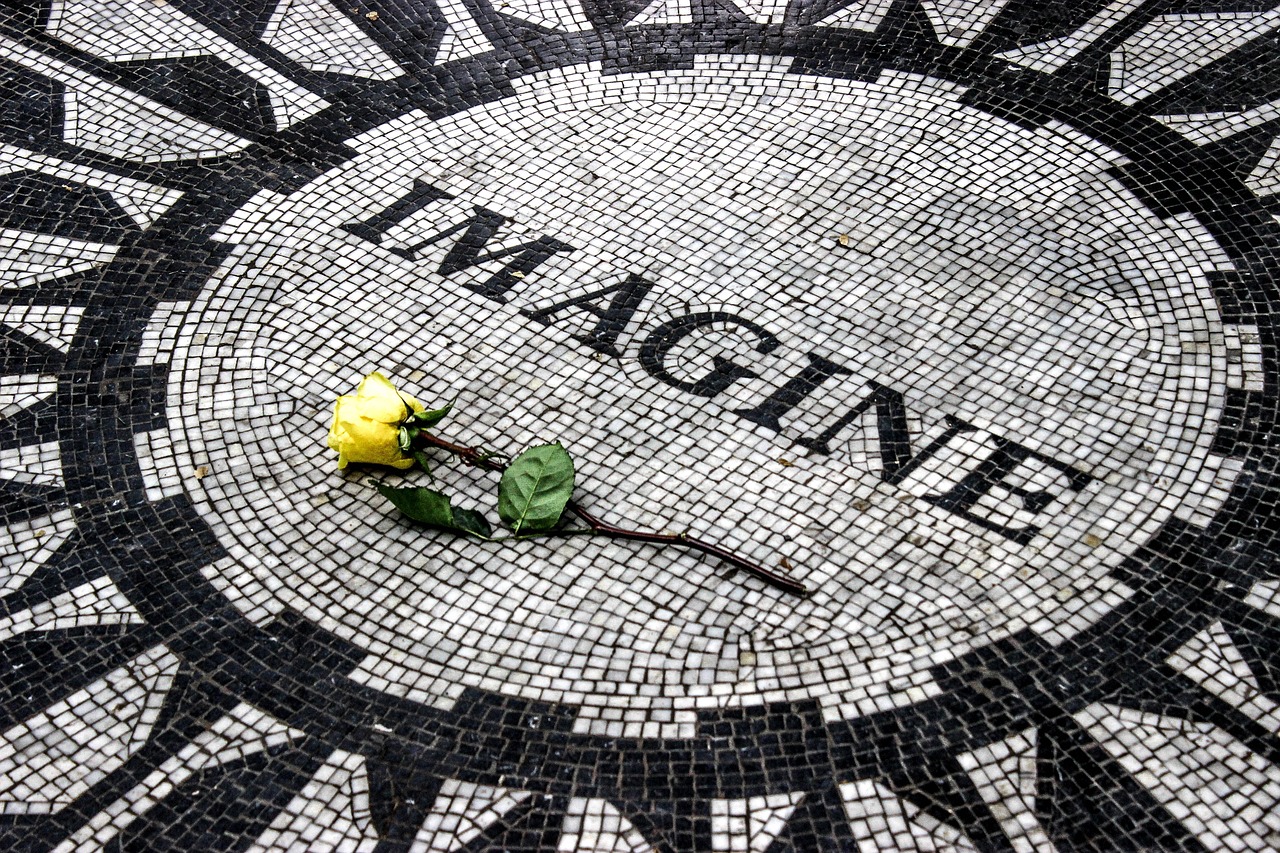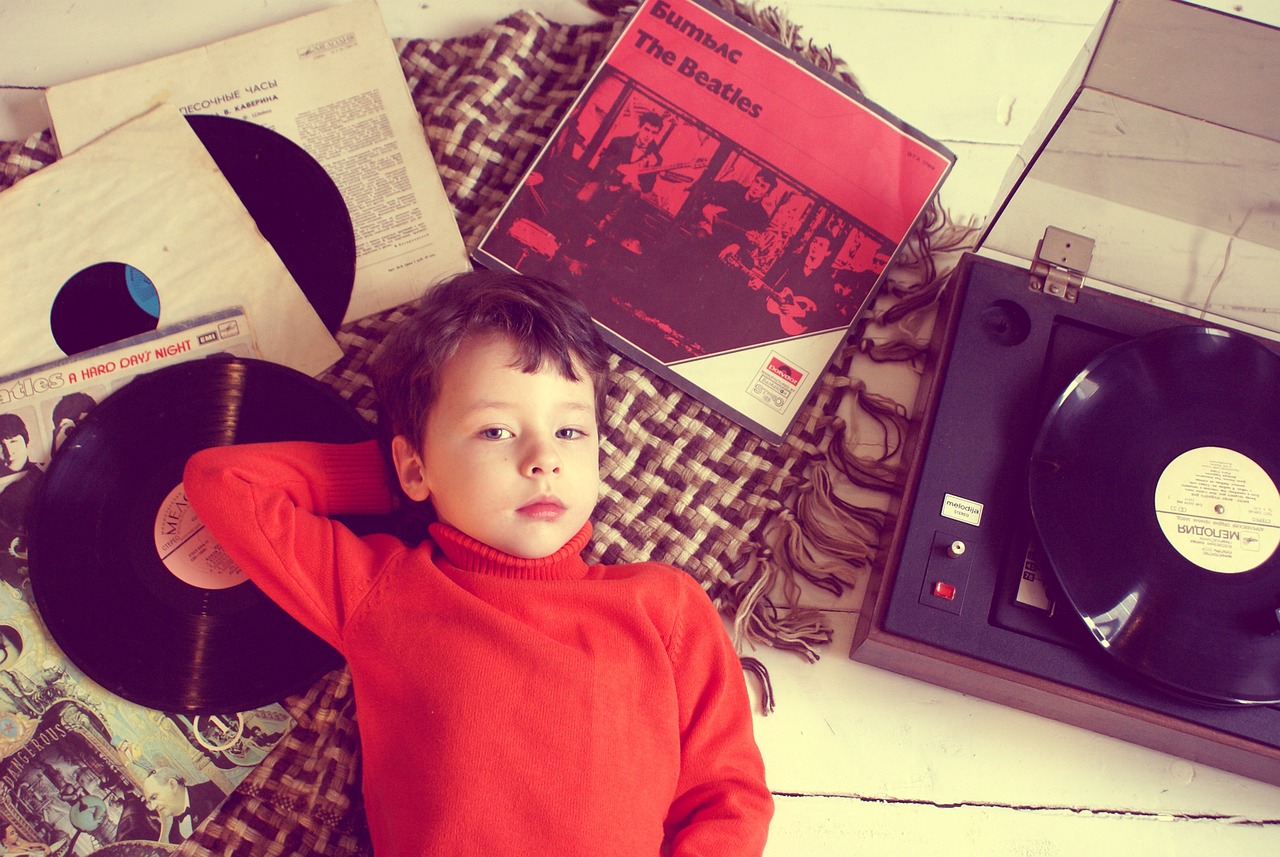Rediscovering the Beats: A Nostalgic Journey Through the 60s

Introduction to the 60s Pop Revolution
The 1960s was a decade of profound change, not only in society but also in the realm of music. As you embark on this nostalgic journey, let’s revisit the beats that defined a generation. The music of the 60s laid the groundwork for modern pop, blending various genres and styles in ways that continue to resonate today.
Major Influencers of 60s Pop
Many artists emerged during this vibrant period, each contributing to the rich tapestry of 60s music. Here are some key figures:
- The Beatles – Iconic band that revolutionized pop music with their innovative sounds and songwriting.
- The Beach Boys – Known for their harmonious vocals and surf rock influence.
- Bob Dylan – Pioneered the fusion of folk and rock, bringing social consciousness to the forefront.
- Aretha Franklin – The ‘Queen of Soul’ who blended gospel and pop, inspiring countless artists.
The Sound of the 60s: A Closer Look
What made the music of the 60s so unique? Here are a few elements that defined the sound:
- Instrumentation: The use of electric guitars, synthesizers, and orchestras created layered sounds.
- Lyrics: Songs often addressed themes of love, peace, and social change.
- Vocal Harmonies: Complex vocal arrangements became a hallmark of many popular bands.
Popular Songs That Shaped the Era
Here are some unforgettable hits from the 60s that you might remember:
| Song Title | Artist | Year |
|---|---|---|
| Hey Jude | The Beatles | 1968 |
| Good Vibrations | The Beach Boys | 1966 |
| Blowin’ in the Wind | Bob Dylan | 1963 |
| Respect | Aretha Franklin | 1967 |
Experiencing the 60s Again
To truly appreciate the music of the 60s, consider the following activities:
- Listening Parties: Gather with friends to play classic 60s albums.
- Live Performances: Attend tribute concerts or festivals featuring 60s music.
- Documentaries: Watch films that explore the cultural impact of 60s music.
Conclusion: The Legacy of 60s Pop
The music of the 60s is more than just a collection of songs; it’s a reflection of a time filled with hope, change, and creativity. As you rediscover these beats, remember the emotions they evoke and the memories they hold. Let the sounds of the 60s continue to inspire and uplift you.
Meet the Legends: Iconic Voices That Shaped a Generation

Discover the Golden Era of Pop Music
The 1960s was a decade that transformed the music landscape, giving birth to iconic voices that resonated deeply with the hearts of millions. As we delve into this vibrant era, let’s take a moment to explore the legends who not only created unforgettable melodies but also forged a cultural revolution.
Voices That Defined an Era
Can you recall the first time you heard The Beatles? Their harmonies and unique sound captivated audiences worldwide. Songs like “Hey Jude” and “Let It Be” became anthems of hope and change. What do these songs mean to you?
Another revolutionary figure was Aretha Franklin, the Queen of Soul herself. Her powerful voice in tracks like “Respect” and “Natural Woman” not only showcased her talent but also became a rallying cry for the civil rights movement. How did her music influence your views on equality?
The Impact of the British Invasion
As we reflect on this transformative time, we cannot overlook the impact of the British Invasion. Bands like The Rolling Stones and The Who brought a raw energy that sparked a cultural shift. Songs like “Satisfaction” and “My Generation” captured the spirit of rebellion. What memories do you have associated with their music?
A Diverse Soundscape
The 60s also embraced a rich tapestry of genres. From the soulful melodies of Sam Cooke to the folk-inspired tunes of Bob Dylan, each artist brought their unique flavor. Dylan’s “Blowin’ in the Wind” posed questions that resonated with the youth. What messages from that time still resonate with you today?
Sharing Memories
Let’s reflect together. What was your favorite song from the 60s? Did you attend any memorable concerts or events? Share your stories and let the music of the 60s play on in our hearts. Remember, each note and lyric holds a piece of our shared history.
The Cultural Revolution: How 60s Pop Music Redefined Society

The 1960s was a decade marked by profound change, not just in music but across various facets of society. As you reminisce about the vibrant tunes of the era, let’s explore how pop music became a catalyst for cultural revolution.
1. The Soundtrack of Change
Pop music in the 60s was not merely entertainment; it was a declaration of independence and a voice for the youth. Artists like The Beatles, The Beach Boys, and Diana Ross & The Supremes led a movement that challenged traditional norms. Can you recall a song that stirred your emotions or made you feel part of something larger?
2. Social Movements and Music
Music became intertwined with social movements, from civil rights to anti-war protests. Songs such as “A Change is Gonna Come” by Sam Cooke and “For What It’s Worth” by Buffalo Springfield encapsulated the spirit of activism. Which songs resonated with your beliefs during that time?
3. Fashion and Identity
Pop music influenced fashion trends, with artists serving as style icons. The vibrant colors, bold patterns, and unique hairstyles of the 60s were a reflection of the music’s energy. Do you remember any particular outfits or styles that were popular among your peers?
4. The Rise of Counterculture
The 60s also witnessed the emergence of counterculture, with music festivals like Woodstock becoming symbols of peace and love. The ethos of the time was captured in music that celebrated freedom and self-expression. What are your fondest memories of attending concerts or festivals?
5. Legacy of 60s Pop Music
The impact of 60s pop music continues to resonate today. Its influence can be seen in contemporary artists who draw inspiration from the sounds of that era. How do you think the music of the 60s has shaped the music we hear now?
The 1960s was a transformative decade, with pop music serving as a powerful medium for change. It redefined societal norms and fostered a sense of community among those who sought to make their voices heard. As you reflect on this pivotal era, think about how music has shaped your life and the lives of those around you.
Behind the Scenes: The Unsung Heroes of 60s Sound Engineering
As we look back on the vibrant music scene of the 1960s, we often celebrate the iconic artists and unforgettable hits that defined the era. However, the magic of sound during this transformative decade was not solely the work of the musicians on stage. Behind every chart-topping single, there were dedicated sound engineers whose contributions remain largely unrecognized. Let’s delve into the stories of these unsung heroes who crafted the sonic landscapes of 60s pop.
The Role of Sound Engineers
Sound engineers are the backbone of any recording session. They are responsible for capturing the essence of a performance and ensuring that each note resonates with clarity and emotion. In the 1960s, this role evolved significantly as technology advanced, bringing forth new opportunities and challenges.
Innovative Techniques
During the 1960s, sound engineers pioneered various techniques that shaped the way music was recorded and produced. Some of these included:
Multi-Track Recording: This technique allowed engineers to record different instruments and vocals separately, which could then be mixed together for a polished final product.
Reverb and Echo: Engineers experimented with reverb and echo effects to create a sense of space and depth in recordings, enhancing the listening experience.
Equalization (EQ): The ability to adjust the balance of different frequency ranges helped to highlight specific elements within a song, making them stand out.
Meet the Unsung Heroes
Let’s shine a light on a few notable sound engineers of the 1960s whose work deserves recognition:
| Name | Contribution | Notable Works |
|---|---|---|
| Lee Hazlewood | Innovative production techniques that blended genres. | “These Boots Are Made for Walkin’” |
| George Martin | Revolutionized the sound of The Beatles with creative studio techniques. | “Sgt. Pepper’s Lonely Hearts Club Band” |
| Glyn Johns | Known for his raw and authentic sound, capturing live energy. | “Who’s Next” by The Who |
Legacy of the 60s Sound Engineers
The impact of these engineers extends far beyond the 1960s. Their pioneering work laid the foundation for modern sound production. Many techniques and technologies developed during this era are still in use today, proving that the legacy of these unsung heroes lives on.
Engaging with the Music
To truly appreciate the work of sound engineers, it’s beneficial to listen actively. As you hear your favorite songs from the 60s, consider the intricate layers of sound and the craftsmanship that went into their creation. Next time you hear a classic tune, take a moment to reflect on the engineering magic that made it possible.
While the spotlight often shines on artists and their performances, it is crucial to remember the talented sound engineers who worked tirelessly behind the scenes. Their contributions helped shape the sound of 60s pop, creating timeless music that continues to resonate with us today. Let’s celebrate these unsung heroes for their vital role in the music we cherish.
Timeless Melodies: The Enduring Influence of 60s Pop on Today’s Music
As we journey through the vibrant landscape of music history, the 1960s stand out as a transformative era. This decade birthed unforgettable melodies that continue to resonate in the hearts and minds of listeners today. Let’s explore how the sounds of the 60s have shaped the music we enjoy now.
The Birth of a New Sound
The 60s saw the rise of groundbreaking artists such as The Beatles, The Beach Boys, and Bob Dylan. Their innovative approaches to songwriting and production not only defined the decade but also laid the foundation for generations of musicians to come. Can you recall the first time you heard a song by any of these iconic artists?
Melodic Structures and Harmonies
One of the most significant contributions of 60s pop is its unique melodic structures. The use of harmonies and catchy hooks can be heard in many contemporary songs. For instance, have you noticed how modern bands often incorporate lush vocal harmonies reminiscent of Simon & Garfunkel? This stylistic choice creates a rich auditory experience, connecting the past with the present.
Lyricism and Storytelling
The lyricism of the 60s was often poignant, addressing social issues and personal experiences. Artists like Joni Mitchell and James Taylor crafted stories that still hold relevance. Today, many songwriters strive to capture that same emotional depth. What stories resonate with you in today’s music?
Instrumentation and Production Techniques
The experimentation with instruments during the 60s paved the way for modern production techniques. From the use of electric guitars to orchestral arrangements, these elements remain prevalent in today’s music. Have you noticed how certain songs evoke the same feelings as classic 60s hits?
The Legacy Lives On
The influence of 60s pop can be heard across various genres, from rock to hip-hop. Artists like Bruno Mars and Adele often draw inspiration from this era. Reflecting on this, can you think of a recent song that feels like a tribute to the timeless melodies of the 60s?
Interactive Reflection
As we conclude our exploration, we invite you to reflect on your own musical journey. What are your favorite songs from the 60s, and how have they shaped your taste in music today? Share your thoughts and let’s keep the conversation going!
Dance Through the Decades: The Movements That Rocked the 60s
Introduction to the 60s Dance Revolution
The 1960s was a decade of transformation, not only in music but also in the very fabric of society. This era brought forth vibrant dance movements that encapsulated the youthful spirit of rebellion and joy. Let’s take a nostalgic journey through the dance styles that defined the decade.
The Twist
The dance craze that ignited the 60s was undoubtedly The Twist. Originating from the late 1950s, it exploded into popularity thanks to artists like Chubby Checker. Imagine yourself at a lively dance party, the beat of the music echoing as you twist your hips side to side. Can you hear the infectious rhythm?
The Mashed Potato
Next came The Mashed Potato, a dance that encouraged improvisation and fun. This dance required minimal footwork, making it accessible for everyone. Picture yourself in a crowd, feet shuffling as you mix and mash, feeling the music pulse through your body. What was your favorite song to dance to?
The Watusi
Among the vibrant dance moves was The Watusi, inspired by African rhythms. It involved simple, yet energetic movements. At parties, dancers would often compete to see who could perform it best. Did you ever show off your Watusi skills?
The Frug
Moving on, The Frug brought a more individualistic flair to dance. Dancers would often focus on their own movements rather than coordinating with partners. Imagine yourself lost in the music, expressing your unique style. Which songs made you want to Frug?
The Swim
Then there was The Swim, a fun and playful dance that mimicked swimming movements. It was all about having a good time, and you could often see groups of friends laughing and splashing around the dance floor. Can you remember the laughter and joy of dancing the Swim?
Conclusion: The Legacy of 60s Dance
The dances of the 1960s were more than just movements; they were expressions of freedom, joy, and cultural change. Each step and twirl brought people together, creating memories that would last a lifetime. As we reminisce about these iconic dances, what was your favorite moment from the dance floor?
Vinyl Memories: Exploring the Collectible Treasures of 60s Music
Introduction to Vinyl Collecting
Ah, the 1960s! A decade that brought forth a kaleidoscope of sounds and styles, setting the stage for modern music as we know it. For many, the magic of this era is encapsulated in the warm, crackling sound of vinyl records. Are you ready to dive into the nostalgic world of 60s music?
Why Collect Vinyl?
Vinyl records are more than just music; they are artifacts of history, capturing the essence of a vibrant cultural revolution. Here are some reasons why collecting vinyl is a cherished hobby:
- Sound Quality: Vinyl provides a rich, warm sound that digital formats often can’t replicate.
- Artwork: Album covers from the 60s are iconic, often featuring stunning artwork that reflects the spirit of the time.
- Nostalgia: Each record tells a story, reminding us of moments from our past.
- Community: Vinyl collecting fosters a sense of community among enthusiasts who share a love for music.
Iconic Albums of the 60s
As you embark on your journey through vinyl collecting, it’s essential to know which albums are considered the cornerstones of 60s music. Here are some must-have records:
- The Beatles – Sgt. Pepper’s Lonely Hearts Club Band: A groundbreaking album that redefined music and pop culture.
- The Beach Boys – Pet Sounds: An innovative blend of harmonies and instrumentation.
- Bob Dylan – Highway 61 Revisited: A shift in songwriting, merging poetic lyrics with rock music.
- The Rolling Stones – Aftermath: The first album featuring all original songs by the band.
Where to Find Vinyl Records
Hunting for vinyl can be an exhilarating experience! Here are some tips on where to find those elusive treasures:
- Record Stores: Local shops often have a curated selection of vintage vinyl.
- Flea Markets and Garage Sales: You never know what gems you might uncover!
- Online Marketplaces: Websites like Discogs and eBay are great for finding specific albums.
- Vinyl Fairs: Check local listings for events dedicated to vinyl enthusiasts.
Handling and Caring for Your Vinyl
To ensure your vinyl records stand the test of time, proper care is essential. Here are some tips:
- Storage: Keep records upright in a cool, dry place.
- Cleaning: Use a microfiber cloth to gently clean the surface before playing.
- Turntables: Invest in a quality turntable to enhance your listening experience.
Join the Conversation
Vinyl collecting is a rewarding journey filled with memories and connections. What are your favorite 60s albums? Share your stories and experiences with fellow collectors, and keep the spirit of the 60s alive!
Icons of Style: Fashion Trends Born from 60s Pop Culture
The Vibrant Palette of the 60s
The 1960s was a decade bursting with bold colors and patterns. Think of the psychedelic hues that dominated the scene! From bright oranges to deep purples, the fashion of the time was as vibrant as the music. The iconic miniskirt, popularized by designers like Mary Quant, was a staple that symbolized freedom and youth.
Influence of Pop Icons
Many fashion trends of the 60s were directly influenced by pop icons. The likes of The Beatles and Twiggy not only shaped the music landscape but also defined the fashion of the era. Beatlemania introduced the world to tailored suits and psychedelic prints, while Twiggy’s androgynous look ushered in a revolution in women’s fashion.
Patterns and Prints
Stripes, polka dots, and floral prints were everywhere! Mod fashion brought innovative designs, with geometric shapes and bold patterns that challenged traditional styles. Can you recall your favorite outfit from that time? Perhaps a shift dress or a pair of bell-bottom jeans?
Accessories that Defined the Look
No outfit was complete without the right accessories. Chunky jewelry, oversized sunglasses, and colorful tights became essential elements of 60s fashion. Do you remember accessorizing your outfits with statement pieces? These elements were not just for show; they made a statement about individuality and expression.
Fashion Rebellion
The 60s also marked a time of rebellion against traditional norms. The hippie movement introduced bohemian styles, characterized by flowy fabrics, fringe, and earthy tones. This was a significant shift in fashion, reflecting a broader cultural change. Did you ever embrace this free-spirited look?
A Legacy of Influence
The impact of 60s fashion is still felt today. Many modern styles echo the trends of this vibrant decade. From high-fashion runways to everyday wear, the essence of the 60s continues to inspire. Which elements of 60s fashion do you still cherish in your wardrobe today?
The Soundtrack of Change: 60s Pop and the Fight for Social Justice
The Cultural Revolution of the 1960s
The 1960s were not just a decade; they were a transformative period in history. As you reflect back, think about how the music of this era served as a catalyst for change. From the civil rights movement to anti-war protests, the pop songs of the 60s encapsulated the spirit of a generation yearning for justice and equality.
The Voices of Change
Artists like Bob Dylan, Joan Baez, and The Beatles used their platforms to address pressing social issues. Can you recall the first time you heard “Blowin’ in the Wind”? Dylan’s questions echoed the frustrations and hopes of a society grappling with inequality. How did that song resonate with you?
Music as a Unifying Force
Think about the gatherings and protests you attended. Music was often the glue that brought people together. Songs like “We Shall Overcome” became anthems for the civil rights movement. As you remember those moments, how did the music make you feel as part of a larger community fighting for justice?
The Impact of Lyrics
The lyrics of 60s pop songs were powerful. They expressed the pain of inequality and the dream of a better future. Take a moment to reflect on your favorite lyrics from that time. What do you believe made them so impactful? Can you still recall the emotions they stirred within you?
A Legacy of Activism
As we look back, it’s important to recognize that these songs didn’t just entertain; they educated and inspired action. The music you loved became a vehicle for activism. How did your favorite artists influence your views on social justice? Did you feel moved to take action in your own life?
Engaging with the Past
Now, as you listen to these timeless tracks once again, consider how they shape your understanding of the world today. The fight for social justice continues, and the music of the 60s remains relevant. Which songs still resonate with you? Are there new interpretations or artists today that echo those revolutionary ideals?
Conclusion: The Soundtrack Lives On
The soundtrack of the 60s is not just a collection of songs; it is a legacy of hope and resilience. Your experiences during this vibrant decade are invaluable. Share your memories and let the music continue to inspire future generations in their fight for justice.
Hear the Echoes: How 60s Pop Continues to Inspire New Generations
If you close your eyes for a moment, can you hear the melodies of the 60s wafting through the air? The era of 60s pop was not merely a decade of music; it was a cultural revolution that shaped the soundscape of modern music. Today, let’s embark on an interactive journey to explore how these timeless tunes continue to inspire new generations.
The Timeless Appeal of 60s Pop
Why do you think the songs from the 60s resonate even now? Here are some reasons:
- Catchy Melodies: The hooks and choruses are unforgettable, making it easy for anyone to sing along.
- Lyrical Depth: Lyrics often conveyed messages of love, peace, and social change, themes that remain relevant.
- Innovative Sounds: The use of new instruments and recording techniques created a unique sound that was ahead of its time.
Influence on Modern Artists
Can you name a few contemporary artists who draw inspiration from 60s pop? Here’s a quick list:
- Bruno Mars: His music often incorporates retro vibes reminiscent of 60s pop.
- Adele: Known for her powerful ballads, she channels the emotional depth found in 60s music.
- Tame Impala: Their psychedelic sound echoes the experimental nature of 60s rock.
Take a moment to reflect. What are some of your favorite songs from the 60s? Let’s make this interactive:
- Think of a song: Which song brings back the most memories for you?
- Share your story: How did this song impact your life or the lives of those around you?
The 60s’ Legacy in Today’s Music
Have you noticed how frequently 60s pop is sampled or covered in modern music? Here are a few examples:
- “Uptown Funk” by Mark Ronson: This hit is heavily influenced by the funk and soul of the 60s.
- “Happy” by Pharrell Williams: The upbeat, feel-good vibe is reminiscent of classic 60s pop.
The echoes of 60s pop are not just sounds; they are legacies that continue to shape music today. As you listen to the tunes of yesteryear, remember that you are part of a vibrant musical history that will never fade away.
